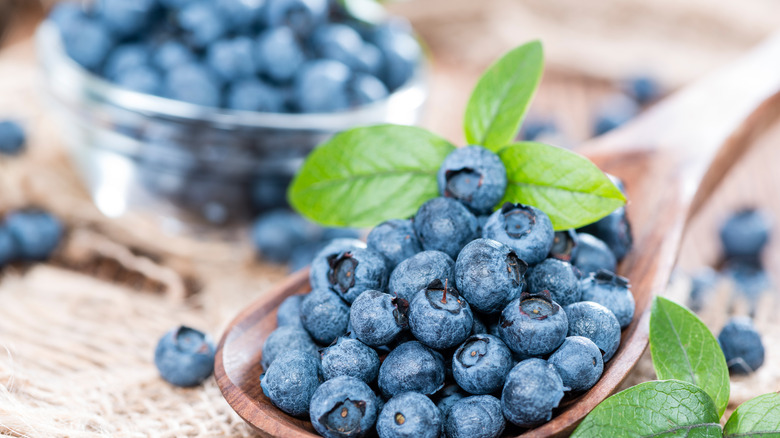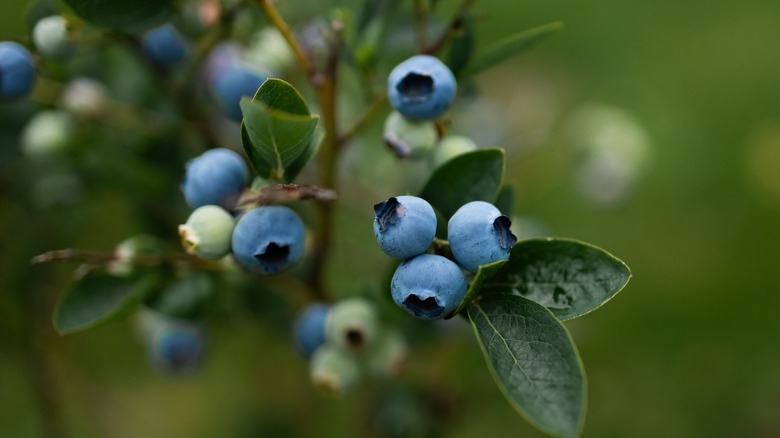The Reason You'll Find So Many Wild Blueberries In Maine
Though Maine has been aptly dubbed the Pine Tree State, it's most famous in the culinary world for its incredible abundance of wild blueberries. Each July and August, Maine's glacier-churned barrens burst forth with a wash of ruby-colored leaves as the state's lowbush blueberries begin to ripen. These berries are smaller and sweeter than highbush species due to the conditions in which the lowbush species thrive — conditions that originated in a prehistoric timeline.
Around 35,000 years ago, glaciers began to recede from present-day Maine's Downeast coast, leaching the soil of nutrients and leaving it sandy and acidic. This soil — which was less than ideal for most plants — proved to be perfect for lowbush blueberries to flourish. Propagated via rhizomes spreading beneath the soil rather than seeds, they were able to spread throughout the barrens and adapt to the harsh environments they encountered both above and below the soil.
These adaptations resulted in small, low blueberry shrubs densely packed with branches and leaves to withstand rain, wind, and cold. Berries from these bushes also tend to be small and richer in flavor than their highbush cousins. The two most common lowbush blueberries are the low sweet and the black low sweet, aptly named for their short frames and deep flavor. Low sweet bushes produce waxy, light blue fruits while black low sweets are much darker in color with little to no wax coating. Though both varieties are packed with blueberry flavor, the darker black sweets tend to be higher in sugar and have a sweeter taste.
Maine blueberries' journey from past to present
Originally tended and cultivated by the indigenous Wabanaki nation, Maine's wild blueberries remained a local secret until the mid-1800s when they were shipped to the Union Army to supplement their food supplies during the Civil War. Prior to this, European colonists who came to Maine's shores in the 1600s relied on these blueberries as a source of food and medicine in the harsh New England climate. Throughout the late 19th century through the present day, farmers took ownership of the blueberry barrens to maintain, preserve, and improve them, ensuring future generations would get the chance to enjoy Maine's wild blueberries.
Today, tourism has helped inspire a wide range of blueberry-based experiences, from blueberry preserves and honey to blueberry ice cream, soda, ale, and even champagne. True connoisseurs of this fruit can also try blueberry-themed facials, body wraps, and other spa offerings to take advantage of blueberries' rich antioxidant content — not to mention these treatments smell divine.
When visiting Maine, August and early September are the best times to enjoy plenty of fresh blueberries. While local businesses certainly have some interesting offerings, you can also purchase fresh berries to add to traditional blueberry desserts or to enjoy fresh with yogurt, oatmeal, or even part of a cheese plate. If you end up with a surplus of them (as we certainly would) not to worry — these blueberries are hardy and it's easy to store them for future enjoyment.

